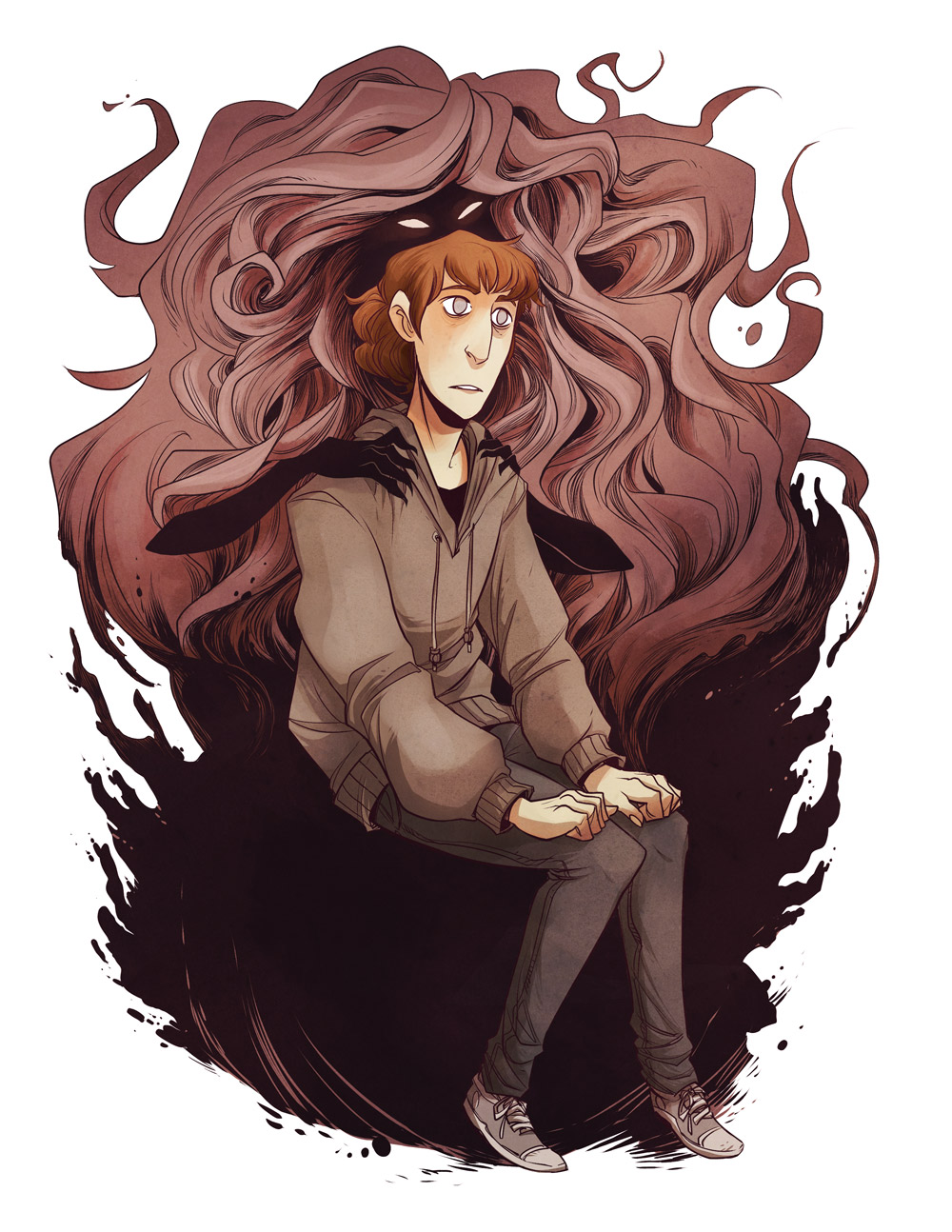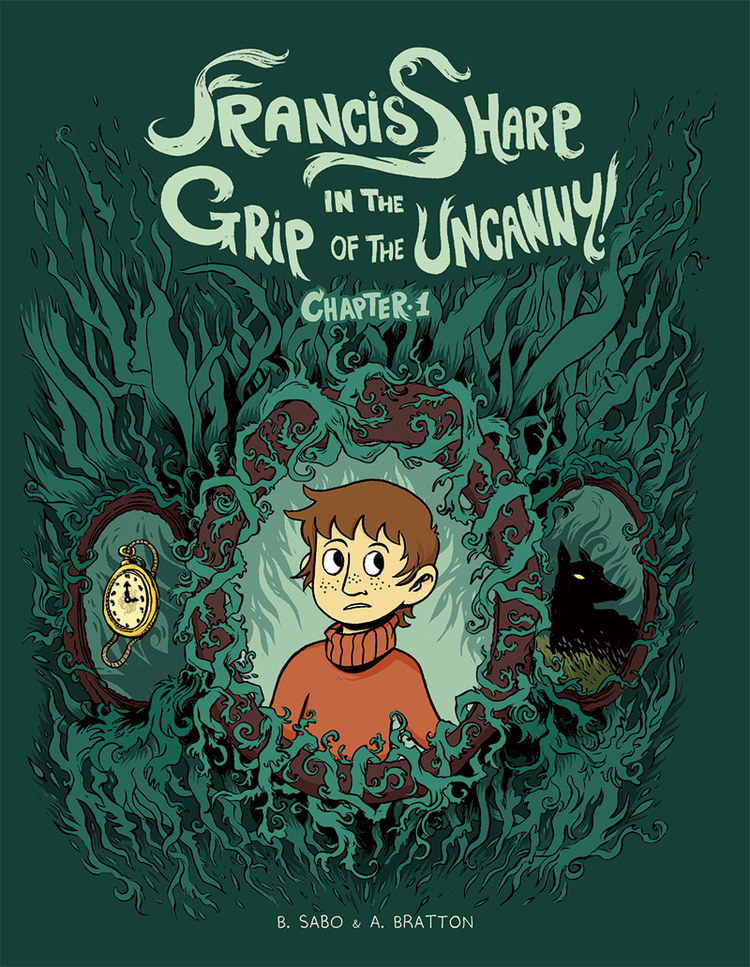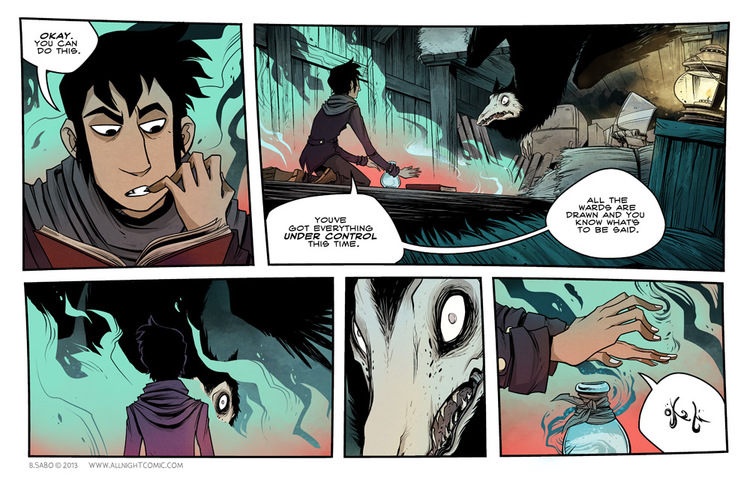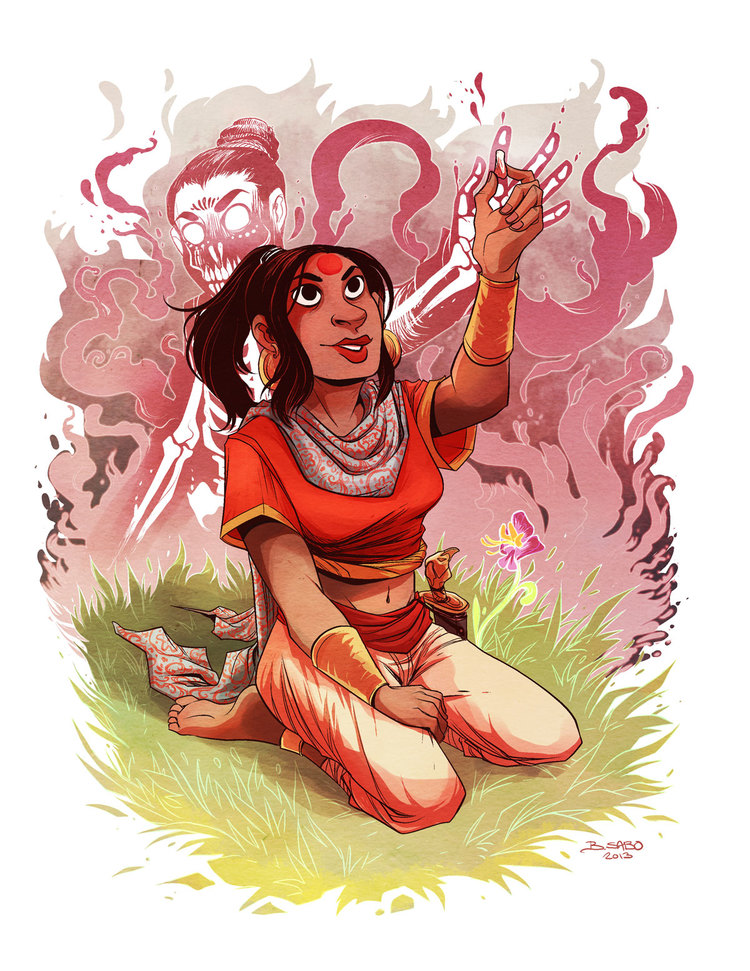New Media Comics with an Old World Flair for the Uncanny
Online comics have upended a lot of the old rules of the game, but the important ones still remain: connect with friends, don't sell yourself short, and above all, just keep doing the work. Brittney Sabo's done well in her still-young career by holding true to that agenda.

The current social media-driven age of online comics has upended or even eliminated a lot of the old rules of the game, but the important ones still remain: connect with friends, don’t sell yourself short, and above everything else, just keep doing the work. Brittney Sabo‘s done well in her still-young career by holding true to that agenda: her work can currently be seen in the stylish and colorful webcomic, All Night, and in the sketches, commissions, prints, and random exercises that pop up on her Twitter and Tumblr accounts.
The Winona, Minnesota native made her way down the Mississippi to Minneapolis College of Art and Design, graduated in 2007, and went on to earn a 2010 Xeric grant — Peter Laird’s award for self-publishing comics creators — for Francis Sharp in the Grip of the Uncanny! with co-author Anna Bratton. Now residing in Minneapolis, Sabo has had a productive five years since then: building a large and vivid illustration portfolio, putting in work as a background artist for Vertigo’s “The Unwritten,” and contributing to anthologies like the collaborative online Spera and Altered Esthetics’s Rock Ink Roll, for which she did the cover. (Full disclosure: one of my comics was also included in said anthology.) That’s given Sabo a lot of opportunity to work through one of the biggest themes that informs her work: the supernatural. There’s a deep, arcane sort of Old World sense to her best work that evokes the more ambiguous and offbeat sides of the unexplained, where horror takes a back seat to curiosity and “haunting” is as much an atmospheric adjective as it is something her characters tend to do to people.
In a recent interview, we touched on some of her inspirations, as well as her working process and her experience with the local comics scene.

Nate Patrin
Who were some of the earliest artists, illustrators, and cartoonists you really took notice of?
Brittney Sabo
As a kid, I was drawn to Bill Watterson’s Calvin and Hobbes strips, just like every child in the ’90s. I honestly never got into superhero books at that age, and most of my exposure to comics was through Watterson’s work and Fox Trot. A little later on, I discovered the Tintin books and became incredibly enamored with them. That was the first time I realized comics weren’t just strips in the newspaper, but could also be much longer stories that took up a whole book.
When I finally became aware of comics proper, I gravitated towards artists like Jhonen Vazquez, Ted McKeever, and Becky Cloonan. I was very much drawn to brushy, rough styles, and their work caught my attention in my teens, when I was beginning to develop a sense of how I wanted to draw.
Nate Patrin
When did it click that you could combine your art with creative storytelling? Are there any specific authors or comics writers that inspired (and still inspire) you?

Brittney Sabo
Like I mentioned before, Tintin was a huge revelation for me, in terms of a comic being the length of a book, and all one story! I don’t think it really clicked for me, however, that I could tell my own stories, about things that interested me, until I was a teen and came across Becky Cloonan‘s work. Seeing someone from an artistic background similar to mine, with similar aesthetic and storytelling tastes, really influenced me to begin thinking more like a comic artist and less like someone just drawing one picture and calling it a day.
Nate Patrin
Something Lynda Barry pointed out in her book, Picture This, sticks with me: Just about every kid really loves to draw, but most of them eventually stop for whatever reason, whether because it feels like work or they don’t think they’re “good enough.” What has kept you working at it?
Brittney Sabo
For me, I definitely felt [the things Barry’s talking about] at one time or another, but I think those that continue to really love to draw into adulthood often do so simply because it’s a core part of how they experience the world, how they navigate it. It’s incredibly hard to picture myself as someone who doesn’t draw, sketch, or create art. When something’s that ingrained into who you are and what you enjoy, the question of whether or not to keep at it really never comes up. On a more personal level, I’d like to imagine someone out there could be as excited about my characters and stories as I am, that they might be endeared to them in the same way I’ve been to certain comics and stories in the past. It’s exciting to think my comics work might have an effect on someone else – good or bad.

Nate Patrin
How do you work — traditional, digital, a mixture of styles?
Brittney Sabo
I used to work almost 95% traditionally and 5% digitally, but now that’s reversed. I always dabbled in digital stuff, but I loved to ink traditionally and was steadfast about sticking to that method for a long time. After discovering how much easier it is to edit and move things around digitally, though, I moved more and more of my drawing process on to the computer. Now, for most of my project, I do nearly all the work digitally. All Night, a web comic I am working on, is done all digitally, with the exception of the thumbnails for the pages. Doing that particular comic in a digital form definitely allows for a slightly faster process and allows me to make more changes on the fly.
Nate Patrin
What’s your favorite aspect of the Twin Cities comics scene and culture? And more broadly, what do you see as its place in the greater local arts community?
Brittney Sabo
The fact that the Twin Cities has a college with a comics program, and that so many amazing people stick around after attending that program, really has bolstered the comics scene in Minneapolis and St. Paul. Not to mention the several cartooning and comics groups scattered throughout the city that draw in amazing people as well; they provide the bedrock of the scene, bringing people together in person.
I love the tight-knit sense of community in the Twin Cities comic circles. The old cliché of ‘Minnesota Nice’ almost seems cynical when talking about the comics community, like a passive aggressive jab. Comics artists here are incredibly earnest, actually — genuinely nice people who want to see everyone succeed. I think it’s a great place to live for young comic artists hoping to find a sense of community and support, especially queer artists.

Nate Patrin
A lot of your work deals with the supernatural and paranormal, but it’s not especially dark. What aspects of this subject appeal most to you?
Brittney Sabo
It’s not so much the horror aspect of supernatural work that excites me, but the tinge of ‘the other’ or the unknown. I think the real thrill of interesting supernatural work is when it’s about more than solely scaring someone, when it gives form to fear in novel ways that don’t rely on horror genre tropes. I enjoy how supernatural stories can incorporate myth and folklore. I have a soft spot for creatures and monsters.
Nate Patrin
Do you have any favorite haunted, strange, or otherwise unusual locales in the Twin Cities or greater Minnesota?
Brittney Sabo
I honestly can’t think of one off the top of my head, but when I travel to other parts of the state I like to try and research which buildings or locations might be haunted and open to the public.
Nate Patrin
Are there any genres or styles you haven’t worked in yet that you’d like to try your hand at?
Brittney Sabo
I’ve never actually illustrated a book before, and while comics definitely has consumed most of my creative output, I’d eventually like to do a more traditional version of the pictures-plus-words equation and work as an illustrator on a book project.
Related links and information:
Find more about Brittney Sabo and see a variety of work on her website, www.bsabo.com. Her web comic, All Night, updates on Fridays.
Nate Patrin is a lifelong Twin Cities resident currently residing in St. Paul’s Uppertown neighborhood. He has written about arts and culture, particularly music, for over 15 years, and also counts graphic novels, film, and visual design among his many aesthetic interests. His work currently appears in Pitchfork, Wondering Sound, Greenroom Magazine and elsewhere.